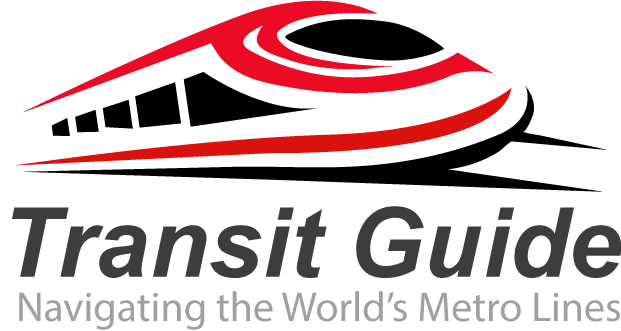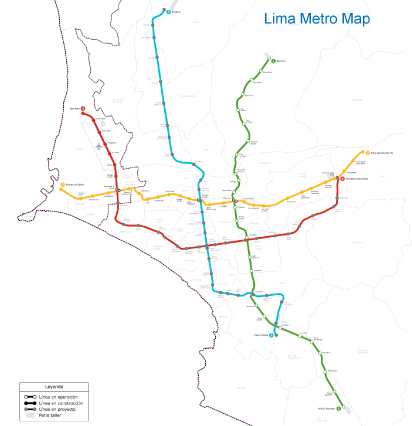Lima’s metro system, officially known as the Metropolitan Railway of Lima, has transformed urban transportation in Peru’s bustling capital city. This comprehensive guide covers everything you need to know about navigating Lima’s metro, from ticket prices to station locations.
Overview of Lima’s Metro System
The Lima Metro currently operates Line 1, a 34.6-kilometer elevated railway that serves as the backbone of the city’s public transportation network. Since its inauguration in 2011, the metro has become an essential service for Lima’s 10 million residents and countless tourists visiting this historic South American metropolis.
The system connects key districts from Villa El Salvador in the south to San Juan de Lurigancho in the north, passing through Lima’s city center and providing crucial transportation links for commuters and visitors alike.
Metro Lines and Coverage
Line 1 (Línea 1)
Line 1 features 26 stations spanning from Villa El Salvador to Bayóvar, covering major districts including:
- Villa El Salvador – Southern terminus
- Villa María del Triunfo
- San Juan de Miraflores
- Santiago de Surco
- La Molina
- Ate
- Santa Anita
- Lima Centro (Downtown Lima)
- El Agustino
- San Juan de Lurigancho – Northern terminus
Future Expansions
Line 2 is currently under construction and will add significant coverage when completed, connecting the port of Callao to eastern Lima districts. This expansion will create an integrated network serving more areas of metropolitan Lima.
Ticket Prices and Payment Options
Lima Metro uses a card-based payment system for convenient travel:
- Standard fare: Approximately 1.50 soles per journey
- Student discounts: Available with valid student identification
- Senior citizen rates: Reduced fares for passengers over 60
- Metro cards: Rechargeable cards available at all stations
Payment is exclusively electronic – cash is not accepted on trains. Visitors can purchase and reload cards at ticket machines or customer service counters located in every station.
Operating Hours and Frequency
The Lima Metro operates with reliable schedules designed to accommodate both rush hour commuters and regular passengers:
- Monday to Friday: 6:00 AM to 10:00 PM
- Saturdays: 6:00 AM to 10:00 PM
- Sundays and holidays: 7:00 AM to 9:00 PM
During peak hours (7:00-9:00 AM and 5:00-7:00 PM), trains arrive every 3-5 minutes. During off-peak periods, frequency extends to 6-8 minutes between trains.
Key Stations and Connections
Several metro stations provide important connections to Lima’s attractions and business districts:
Central Stations
- Gamarra Station: Access to Peru’s largest textile market
- Grau Station: Connection to downtown Lima and historic center
- Cultura Station: Near cultural attractions and government buildings
Tourist-Friendly Stops
- Jorge Chávez Station: Convenient for exploring central Lima
- Presbítero Maestro Station: Access to historic cemeteries and colonial architecture
- Villa El Salvador Station: Gateway to southern Lima districts
Tips for Using Lima Metro
Safety and Security
Lima Metro maintains high safety standards with security personnel at every station. The system features:
- CCTV surveillance throughout all stations and trains
- Emergency communication systems
- Well-lit platforms and cars
- Regular security patrols
Best Practices
- Avoid rush hours when possible for a more comfortable journey
- Keep valuables secure and remain aware of your surroundings
- Plan connections in advance using metro maps available at stations
- Purchase cards with extra credit to avoid queues
Accessibility Features
Lima Metro accommodates passengers with disabilities through:
- Elevator access at all stations
- Designated seating areas
- Audio announcements
- Platform edge barriers for safety
Integration with Other Transportation
The metro system connects seamlessly with Lima’s broader public transportation network:
- Metropolitano BRT: Lima’s rapid bus system with several connection points
- Regular bus routes: Extensive network complementing metro coverage
- Taxi services: Available at all major stations
- Airport connections: Via Metropolitano system to Jorge Chávez International Airport
Planning Your Journey
For tourists and first-time users, consider these recommendations:
- Download transportation apps that include Lima Metro routes
- Study the map before traveling to identify your destination station
- Allow extra time during your first few journeys
- Learn basic Spanish phrases for asking directions if needed
- Keep small bills for purchasing metro cards
Economic Impact and Future Development
Lima’s metro system represents a significant investment in urban infrastructure, reducing traffic congestion and providing affordable transportation options for residents across economic backgrounds. The system carries over 300,000 passengers daily, making it a crucial component of the city’s transportation ecosystem.
Future plans include extending Line 1 and completing Line 2, which will create a comprehensive network serving greater Lima and improving connectivity throughout the metropolitan area.
Conclusion
Lima’s metro system offers an efficient, safe, and affordable way to navigate Peru’s capital city. Whether you’re a tourist exploring historical sites or a resident commuting to work, understanding the metro system enhances your Lima experience. With ongoing expansions and improvements, Lima Metro continues evolving as a cornerstone of urban transportation in South America.
The system’s combination of modern infrastructure, reasonable pricing, and extensive coverage makes it an excellent choice for both short-term visitors and long-term residents seeking reliable transportation throughout Lima.

